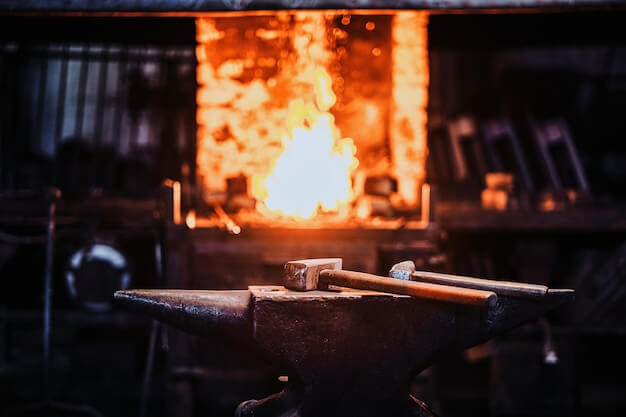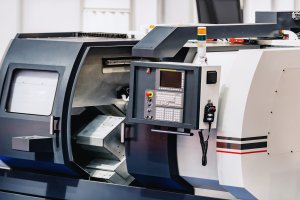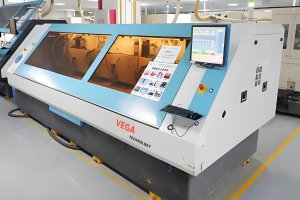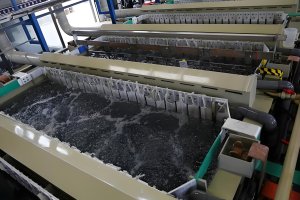Introduction to CNC Machining and the Role of Heat Treatment
CNC (Computer Numerical Control) machining stands as a cornerstone in modern manufacturing, enabling the precision crafting of parts with minimal human intervention. Through programmed commands, CNC machines repetitively produce complex shapes that are essential in various industries, ranging from automotive to aerospace. Integral to this process of fabrication is heat treatment—a method used to alter the mechanical properties of materials to enhance their functionality. Heat treatment processes such as annealing, quenching, and tempering are employed to increase the hardness, strength, or ductility of metals, ensuring they meet the specific demands of their application. This synergy between precise machining and tailored material characteristics is what allows CNC machined components to perform reliably under strenuous conditions.
Introduction to Heat Treatment
Heat treatment encompasses a group of industrial and metalworking processes used to alter the physical, and sometimes chemical, properties of a material. In CNC machining, heat treating materials is fundamental for enhancing their mechanical properties such as strength, hardness, and wear resistance. The objectives encompass relieving stresses, increasing toughness, and achieving desired dimensional stability. Materials like steel alloys often undergo processes such as annealing, quenching, and tempering to achieve specific performance criteria necessary for their intended application. For instance, tool steels might be hardened to withstand the rigors of cutting operations, while components made from aircraft-grade titanium may be treated to ensure resilience under high stress and temperatures.
Materials Commonly Used in CNC Machining That Require Heat Treatment
In the realm of CNC machining, certain materials necessitate heat treatment to achieve their desired mechanical properties. Alloy steels such as 4140 and 4340 are prime examples; they require specific heat-treating methods to reach the hardness and durability necessary for tough industrial applications. Similarly, stainless steels including grades 304 and 316 undergo heat treatment to enhance their corrosion resistance and mechanical strength, ensuring their suitability for environments that demand longevity and hygiene. Lastly, tool steels like D2 and O1 must be heat-treated to maintain sharp edges and high wear resistance under repetitive stress, thereby preserving the precision of cutting and forming operations. Through these treatments, each material’s characteristics are enhanced to meet the rigorous demands of varied engineering specifications.
Effects of Heat Treatment on Material Properties
In CNC machining, different materials often require varying heat treatments to enhance their performance in specific applications. Case hardening is employed primarily with low carbon steels to boost wear resistance by hardening only the surface while maintaining a tough core. Annealing, on the other hand, softens steel or glass to improve machinability and alleviate residual stresses induced during processing, ensuring dimensional stability. Quenching followed by tempering strikes an essential balance between achieving high hardness and adequate toughness, critical for components that must resist both impact and wear. For example, gears are frequently quenched and tempered to ensure they possess the necessary durability for their operational demands without being overly brittle.
Real-world Application of Hardened Tool Steel in High-wear Components
In the sphere of CNC machining, hardened tool steels are quintessential for components subjected to high wear and tear. For example, gears and cutting tools are often manufactured from grades such as D2 or A2, which provide exceptional durability due to their high carbon and chromium content. These materials undergo heat treatment—typically through processes like hardening and tempering—to enhance their hardness, making them resistant to abrasion and deformation under strenuous working conditions. As a result, the service life of these critical components is substantially prolonged, ensuring reliability and cost-efficiency in industrial settings where downtime can incur significant losses.
Considerations for Stainless Steel Parts Used in Corrosive Environments
In contrast, stainless steel parts utilized in corrosive environments, like marine hardware or chemical processing equipment, illustrate a different aspect of heat treatment necessity. Grades 304 or 316 stainless steel boast innate corrosion resistance; however, select applications demand augmented protection. Through solution annealing—a heat treatment process that involves holding at a high temperature followed by rapid cooling—these austenitic stainless steels realign their microstructure, thereby restoring corrosion resistance diminished during machining or welding operations. This step ensures that components such as valves, pumps, and fasteners maintain their integrity even when exposed to harsh chemicals or saltwater.
The Heat Treatment Process: Steps Before and After Machining
In CNC machining, the use of heat treatment processes is pivotal for shaping materials with precision. Pre-machining heat treatments are primarily employed to soften materials such as high-carbon steels or alloys, making them more amenable to cutting and shaping. This preparation step often involves annealing or normalizing, where the metal is heated to a specific temperature and then cooled at a controlled rate, reducing hardness and improving ductility for easier material removal. On the flipside, post-machining heat treatments focus on achieving the desired final properties in machined parts. Processes like tempering or hardening play an essential role in adjusting tensile strength, yield strength, and wear resistance. For instance, after machining a complex aerospace component from titanium alloy, it may undergo solution treatment and aging to fine-tune its mechanical properties for optimal performance under stress.
Challenges Involved with Heat Treating Materials in CNC Machining
In the realm of CNC machining, heat treatment is crucial for enhancing material properties, but it brings about significant challenges such as distortion control and maintaining dimensional tolerances. Metals like steel and aluminum often undergo processes like hardening and annealing to improve their durability and workability; however, these thermal treatments can cause parts to warp or change shape. Ensuring that a machined component retains its precise dimensions post-treatment necessitates strict temperature control and gradual cooling procedures. For example, in the aerospace industry where the margins for error are minimal, even slight deviations from specified tolerances due to heat-induced distortion can make a part unfit for application. Consequently, machinists must employ advanced techniques and carefully calibrated equipment to mitigate these effects and deliver components that meet stringent quality standards.
Material Considerations for Heat Treatment in CNC Machining
In the realm of CNC machining, deciding whether a material requires heat treatment largely hinges on its intended application and mechanical property requirements. The most critical factor is the desired balance between hardness and ductility—materials like tool steels often undergo heat treatment to achieve optimal performance in wear resistance and dimensional stability. Not all CNC machined parts tolerate heat treatment well; materials with low melting points or thermal conductivities risk deforming or developing internal stresses. To maintain precision post-treatment, careful control of temperature gradients and cooling rates is essential, alongside possible subsequent machining to rectify distortions. Moreover, alternative techniques such as work hardening or surface treatments like nitriding can be employed to enhance specific properties without the need for conventional heat treatment.
Other Articles You Might Enjoy
- What is Heat Treatment in CNC Machining
Heat treatment is one of the most common process used by CNC machining manufacturer. It can change the material properties of your metal. This means that the metal's strength and…
- Optimizing CNC Machining with Hybrid Materials: Benefits and Challenges
Introduction: CNC Machining and the Role of Hybrid Materials CNC machining, short for Computer Numerical Control machining, is a manufacturing process where pre-programmed computer software dictates the movement of factory…
- Precision CNC Machining of Steel: High-Volume Production
Precision CNC Machining and High-Volume Production As an integral part of modern manufacturing processes, Precision Computer Numerical Control (CNC) machining brings about unmatched accuracy and consistency in the production of…






